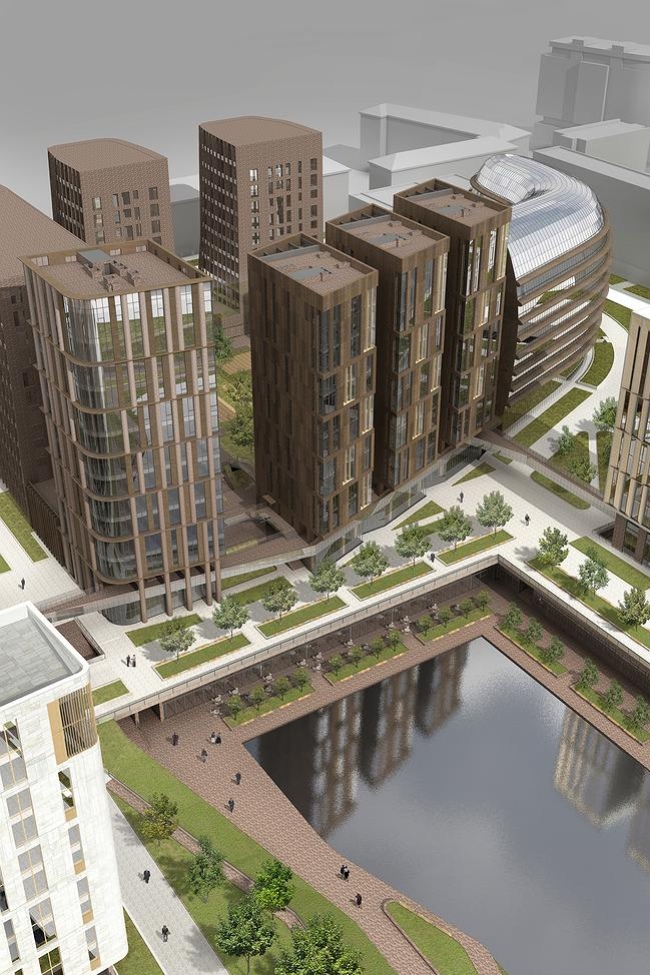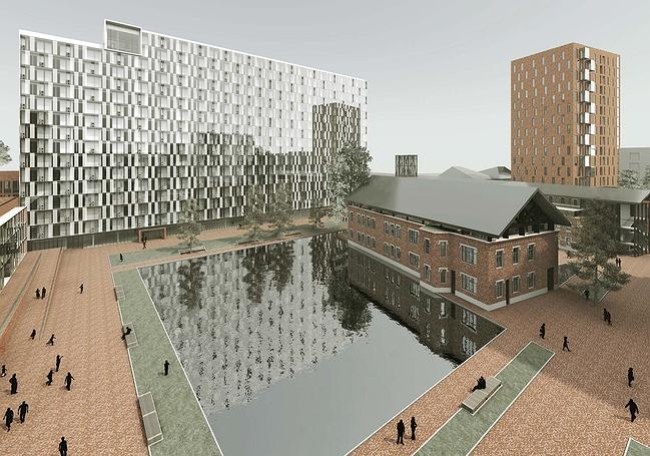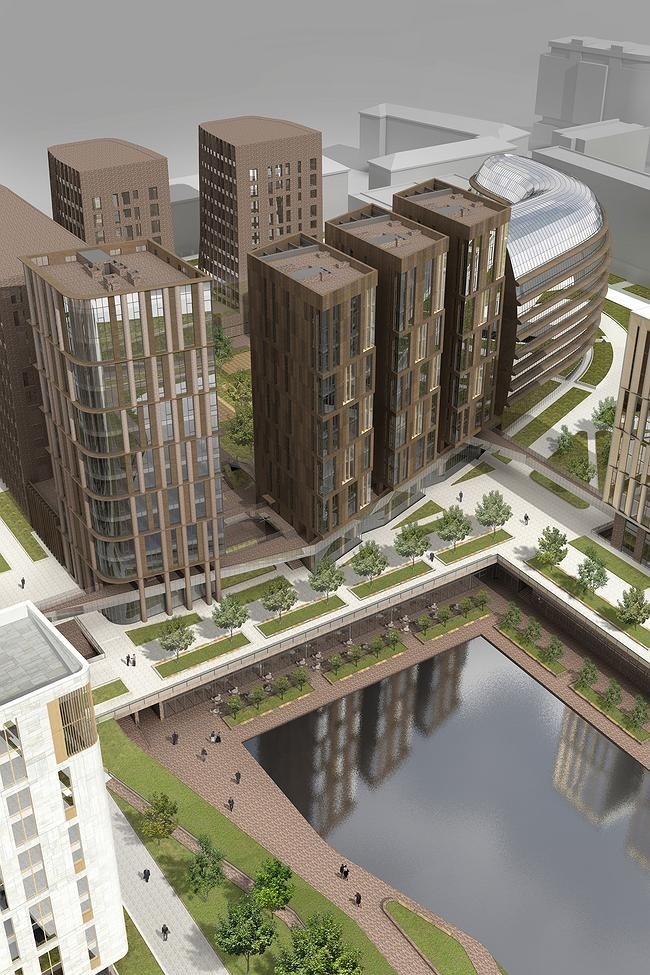|
Published on Archi.ru (https://archi.ru) |
|
| 11.04.2013 | |
|
Sergey Skuratov: public spaces are more important than the architecture itself |
|
|
Anna Martovitskaya |
|
| Architect: | |
| Sergey Skuratov | |
| Studio: | |
| Sergey Skuratov architects | |
|
The leader of "Sergey Skuratov Architects" speaks about the current projects of his studio. Archi.ru: Sergey, your architectural studio has suddenly disappeared
from the list of our steady newsmakers. What is the reason of such hiatus? What
is your creative team up to, presently? Sergey Skuratov: We spend most of our time working on the "Garden
Quarters" project. After this project was purchased by
"Binbank", things started to get done really quickly there. The first
stage of development is now being completed - it is the first and the fourth
quarters - there, the facades are being coated with the Hagemeister Flemish
bricks and natural stone, the stained-glass windows are being installed, and
the improvement of the adjacent territory is nearly finished. Concurrently to
this, we are preparing the detailed design of the second stage - these are the
second and the third quarters the construction of which has also begun already,
the construction pit has been made, the foundation plate has been laid, and the
slurry wall has been built as well. A good third of our employees spends their every other working day at the construction site. I will admit that for our team, the "Garden Quarters" have become a piece of work that is not only very interesting but also challenging - it is a test of our professionalism, and it is a point of honor for us to stand up to it. The architects that are under 30-35 years of age are discovering for themselves a new side to our profession - they start to realize that the beautiful pictures are only the beginning of any project. I, as the leader of the studio and as their mentor, am very proud of my people: they do great detailed drafts, they delve into the nuances of the project, and thanks to this approach we were able to turn even the complex and tedious stage of the preparation of the specification documents into an exciting and creative experience.
"Garden Quarters" Archi.ru: Does your studio develop the specification documents for the
objects by other architects that will be built in the "Garden
Quarters"? Sergey Skuratov: No, only for our own. But, yes, we do go through the
specs of our colleagues, give them an odd piece of advice, and sometimes even
provide them with our already developed units and solutions, even if it means
that they are to be duplicated from project to project, making "Garden
Quarters" a single work of town-planning art. Archi.ru: Now, nearly six years after the start of this project, do you
still consider the consortium of the architects to be a good idea? Sergey Skuratov: Well, of course it would have been easier to do the whole thing all by
myself. And it is not so much that I trust myself more, it is just that the
interaction of people, especially creative people, is a very complex process by
definition. But the city is not created by one architect and with one idea, so
the project definitely benefitted from the input by other authors. Even though
I have to admit that I ultimately feel tremendous moral responsibility for everything
that is going on in the "Garden Quarters", without really making much
difference between the houses that were designed by me or designed by my
colleagues. Archi.ru: As far as I know, the inner public areas in "Garden
Quarters" are also done by your studio? Sergey Skuratov: Yes, and this is exactly what we are doing full-time
these days. We invited Bernard Pictet, the French artist and designer, expert
in glass, and we include his works into the interior of each of the lobbies,
framing them in the appropriate manner. I will not uncover all the details so
far but I hope this will become the highlight and the most intriguing part of
the project. Archi.ru: What other projects by your studio are also starting to get
implemented? Sergey Skuratov: The
Residential complex in Rostov-on-Don Also, the house on the Burdenko Street is almost completed - right now its upper part is being finished; what we still need to do is "hem" the cantilever with bricks and make the upper beam. The improvement of the adjacent territory is also completed and now we are working on the interior design of the public areas. The entrance lobby, according to our plan, will be completely finished with wood: the house itself is built of dark bricks and comes out pretty "brutal" and in some way even inaccessible-looking, this is why we are doing the contrastive interiors, immersing the newcomers into the atmosphere of wood that feels light and warm. Although, we treat the wood in an unconventional way here and we are also preparing a surprise, hopefully, an interesting one. Archi.ru: Last year, you won a few tenders, including a most unexpected
one - for the reconstruction of the "Russian Lounge" in Sergey Skuratov: I never really avoided doing small-scale projects. On the
contrary, I am convinced that working on serious town-planning tasks must be
preceded by working with smaller volumes and designing interiors. And there are
several such projects in our portfolio, in fact. On the one hand, this is
indeed the "Russian Lounge" that we are doing at the invitation from
the Vladimir Potanin Foundation (this project being monitored by Natalia
Zolofova). The main goal of the "Russian Lounge" is renovating its
space which would help, let's say, break the common for American society
stereotypes about Besides, we are now building our first country villa, literally from scratch, doing everything: the house, the maintenance structures, improving the land plot, the interiors, too. We have been working for almost a year already, and now the construction is beginning. And I admit that it is a great experience working on the interiors after you came up with the shape of the space all by yourself. And again, the interior and the exterior exist in contrast to one another - I am sure that in the country this technique is quite appropriate, all the more so because there is a lot of glass in that house. Archi.ru: Was it a contest project or was it ordered directly as a
"Villa by Skuratov"? Sergey Skuratov: I was invited directly. Such a level of trust and
respect entails, of course, a lot of obligations but it is also very inspiring,
and I thank my destiny for this experience. Archi.ru: Getting such freedom of creation must be practically
impossible in a big city, isn't it? A characteristic example is the project of
a residential complex on the Paveletskaya Embankment where you originally
proposed a futuristic pedestrian bridge but then had to simplify the project,
at the same time downgrading the housing class. As far as I know, it is still
being modified? Sergey Skuratov: That's quite a complicated story, really. We did win
the international competition, particularly due to our idea of building a
spectacular pedestrian bridge over the
Residential complex on the territory of Moscow's former printing and publishing integrated works What really worries me in terms of this project is how the public areas are going to be designed. In the "Garden Quarters" the theme of the public spaces penetrating into the residential enclave was a priority for me because I really wanted to avoid making again the mistake of the 2000's when in the middle of the city there appeared the "rich people only" restricted area. On the Paveletskaya Embankment, implementing such a noble idea is many times more difficult - it is a lot further away from the center of the city, and it presents a different contest. And still I am convinced that you just cannot shut off this piece of the city from its inhabitants - because in that area it will be the only "civilized" fraction of the social life, and, consequently, the unique and only chance to breathe new life into that part of the city. However, thinking about the comfort of the city environment, we have to at the same time think about the comfort and safety of its inhabitants and this is why right now we are searching for the solution that would help us to separate the dwellers of the complex and other people without really building any extra walls or fences.
"Garden Quarters" Archi.ru: Luckily, the interest for the public areas is on the rise
lately which increases the chances of your ideas becoming a reality. Sergey Skuratov: The public spaces are really becoming a most important
part of the city environment - luckily, In this sense I am quite optimistic in terms of what is going on in Archi.ru: And do you still participate in contests yourself, by the way?
Somehow, your studio was not on the list of those companies that did the Sergey Skuratov: We submitted our application for the participation in
this contest together with the Dutch bureau Neutelings Riedijk Architects but
we did not pass into the second round. Well, win a few, lose a few - a contest
is always a lottery. Right now we are going to do the contest for the project
of the last house at "Ostozhenka", and also the contest for the
housing project of 10 hectares in the west of I generally like the recently-implemented idea of such "consulting tenders", like the one that was dedicated to the Berezhkovskaya Embankment. Long-term thinking is something that both our city and its architects really should develop. Any half-experienced designer can draw a facade, there are only a dozen techniques, and you don't have to be a rocket scientist to use them in this or that combination. But the contact with the surrounding houses - this is something that you have to feel and take into consideration. Of course, the architect cannot breathe a new live into the old block with a wave of his magic wand but creating the various prerequisite conditions for society to accept and use this project is something that that can and must be done. And this can only be done by practicing the responsible approach at every designing stage. In April, at "Golden Section", there will be a master class that I decided to name "Architecture without Much Words", and I am going to speak specifically about this. About the fact that we must be extremely careful when we work with the arsenal of the techniques and devices that the modern designer has at his disposal. Any word said in passing will tell on our society and on our living space. And, if we do not want our city to turn into a screaming garish mass but become a comfortable place to live in, we need to be attentive to every little detail. Conciseness and clarity of gesture are still things that do make a difference, and, as an architect, I see my mission in striving, in every project that I am doing, to achieve this clarity, ruthlessly cutting off all the unnecessary "words", materials, and techniques. NoneNone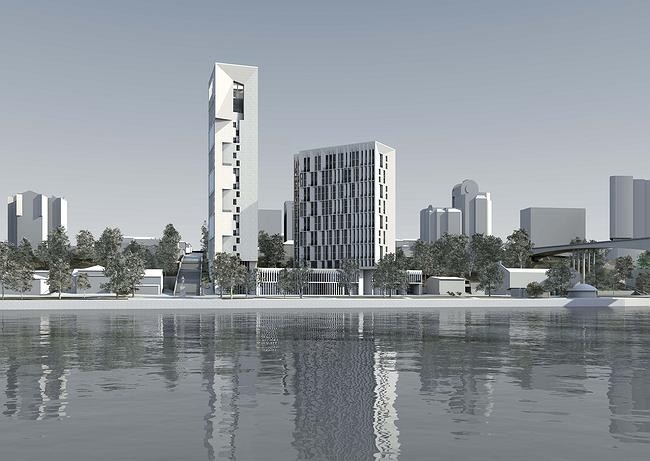 None None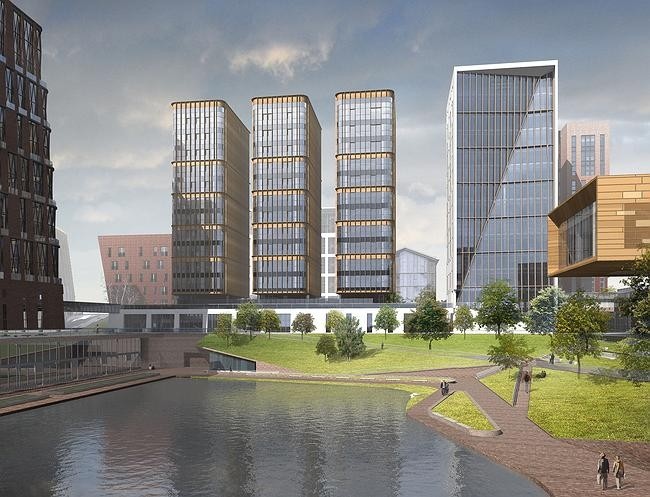 None |
|
